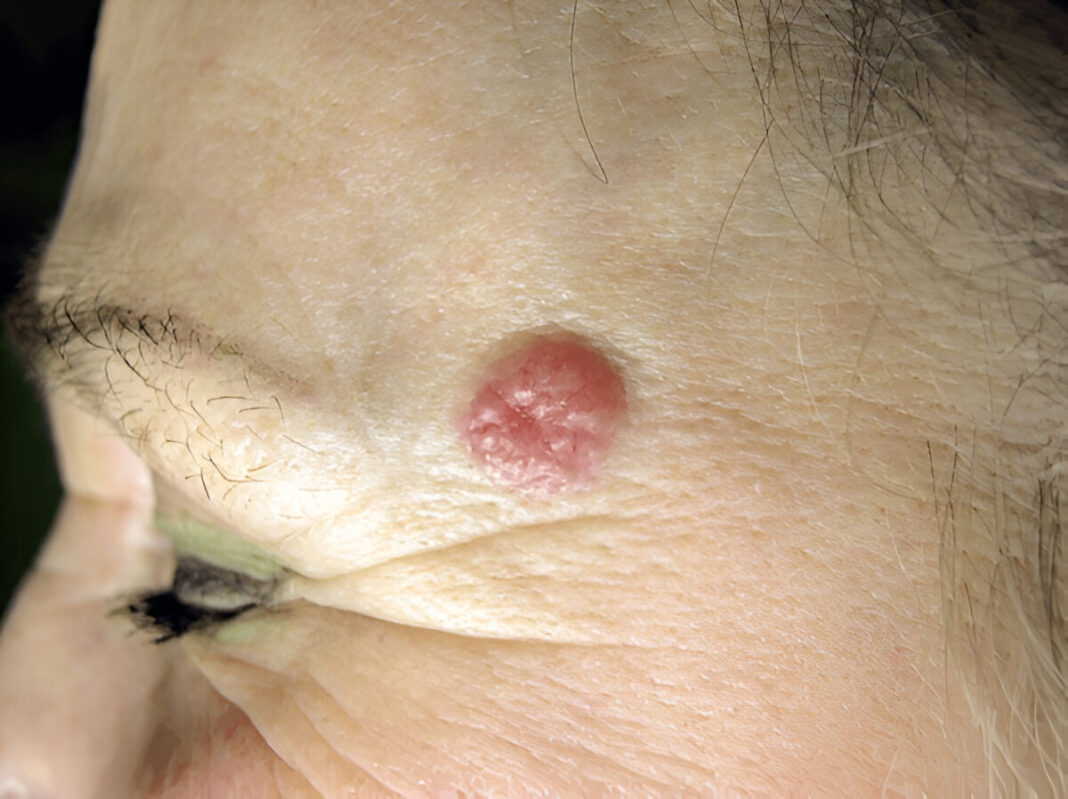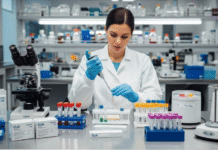Bacillary angiomatosis (BA) is a rare bacterial infection that mostly affects people with weak immune systems, especially those with HIV/AIDS. This condition can cause abnormal growths of blood vessels on the skin and other organs, making it look similar to tumors or skin cancers. Fortunately, with the right diagnosis and antibiotic treatment, bacillary angiomatosis is usually curable. This article will explain the causes, symptoms, diagnosis, treatment, and prevention of bacillary angiomatosis in a simple, easy-to-understand way.
What Causes Bacillary Angiomatosis?
Bacillary angiomatosis is caused by two types of bacteria: Bartonella henselae and Bartonella quintana. These bacteria are spread to humans through cats or body lice. Bartonella henselae is often carried by cats, especially kittens, and is also the cause of cat scratch disease. People can get infected through a cat scratch, bite, or even contact with cat saliva on broken skin (Relman et al., 1990). On the other hand, Bartonella quintana is spread by body lice and is more common among people living in crowded or unsanitary conditions.
Who Is at Risk?
Bacillary angiomatosis usually affects people with weakened immune systems. The most common group is people living with advanced HIV/AIDS, especially those with very low CD4 counts (less than 100 cells/mm³) (LeBoit et al., 1988). It can also affect patients undergoing chemotherapy, people who have had organ transplants, or those with other immune disorders. Healthy people almost never get bacillary angiomatosis.
Symptoms of Bacillary Angiomatosis
The most noticeable symptom of bacillary angiomatosis is the appearance of red to purple skin lesions. These lesions may look like bumps, nodules, or raised patches, and they can bleed easily. Some lesions look similar to Kaposi’s sarcoma, a type of cancer also common in people with HIV/AIDS, which can make diagnosis challenging.
However, bacillary angiomatosis can also affect internal organs. In such cases, patients may have fever, weight loss, tiredness, and pain in affected areas like the liver, spleen, or bones. When the liver or spleen is involved, it can cause a condition called bacillary peliosis, which is marked by blood-filled spaces in the organs (Koehler et al., 1992).
Diagnosis
Diagnosing bacillary angiomatosis involves a combination of physical examination, patient history, and lab tests. Doctors usually take a biopsy of the skin lesion to examine under a microscope. Special stains, such as Warthin-Starry silver stain, can help identify the Bartonella bacteria in the tissue. Polymerase chain reaction (PCR) tests and blood cultures may also be used to detect Bartonella DNA or bacteria directly (Rolain et al., 2004).
Because the skin lesions can look like other diseases such as Kaposi’s sarcoma, it is very important to make the correct diagnosis to ensure proper treatment.
Treatment and Prognosis
The good news is that bacillary angiomatosis is treatable with antibiotics. The most commonly used antibiotics are erythromycin or doxycycline, usually taken for at least 3 to 4 months (LeBoit et al., 1988). In more severe cases, especially when internal organs are involved, intravenous antibiotics may be needed first.
With proper treatment, most patients recover fully, and the lesions go away. However, if left untreated, bacillary angiomatosis can become life-threatening, especially if it spreads to vital organs.
Prevention
Preventing bacillary angiomatosis mainly involves reducing exposure to the sources of infection. For people with HIV/AIDS or other immune problems, it is advisable to avoid rough play with cats, especially kittens. They should also avoid contact with stray animals and maintain good hygiene around pets. Controlling lice infestations and improving living conditions can help prevent Bartonella quintana infections.
For HIV-positive individuals, starting and maintaining effective antiretroviral therapy (ART) can greatly reduce the risk of opportunistic infections like bacillary angiomatosis by strengthening the immune system.
Bacillary angiomatosis is a rare but important disease that mainly affects people with weakened immune systems. Caused by bacteria from cats or lice, it can lead to skin lesions and internal infections. Fortunately, with the right antibiotics, it can usually be cured. Early diagnosis and treatment are essential, and steps to prevent infection can protect at-risk individuals. In the age of advanced HIV treatment and better medical care, the number of BA cases has gone down, but awareness remains important especially for doctors, patients, and caregivers involved in the care of immunocompromised individuals.
References
- Koehler, J. E., Sanchez, M. A., Garrido, C. S., Whitfeld, M. J., Chen, F. M., Berger, T. G., … & Tappero, J. W. (1992). Molecular epidemiology of Bartonella henselae infection in patients with bacillary angiomatosis-peliosis. New England Journal of Medicine, 327(23), 1625–1631. https://doi.org/10.1056/NEJM199212033272303
- LeBoit, P. E., Berger, T. G., Egbert, B. M., Beckstead, J. H., Yen, T. S., & Stoler, M. H. (1988). Bacillary angiomatosis. New England Journal of Medicine, 319(12), 807–812. https://doi.org/10.1056/NEJM198809223191203
- Relman, D. A., Loutit, J. S., Schmidt, T. M., Falkow, S., & Tompkins, L. S. (1990). The agent of bacillary angiomatosis: An approach to the identification of uncultured pathogens. New England Journal of Medicine, 323(23), 1573–1580. https://doi.org/10.1056/NEJM199012063232305
- Rolain, J. M., Brouqui, P., Koehler, J. E., Maguina, C., Dolan, M. J., & Raoult, D. (2004). Recommendations for treatment of human infections caused by Bartonella species. Antimicrobial Agents and Chemotherapy, 48(6), 1921–1933. https://doi.org/10.1128/AAC.48.6.1921-1933.2004











